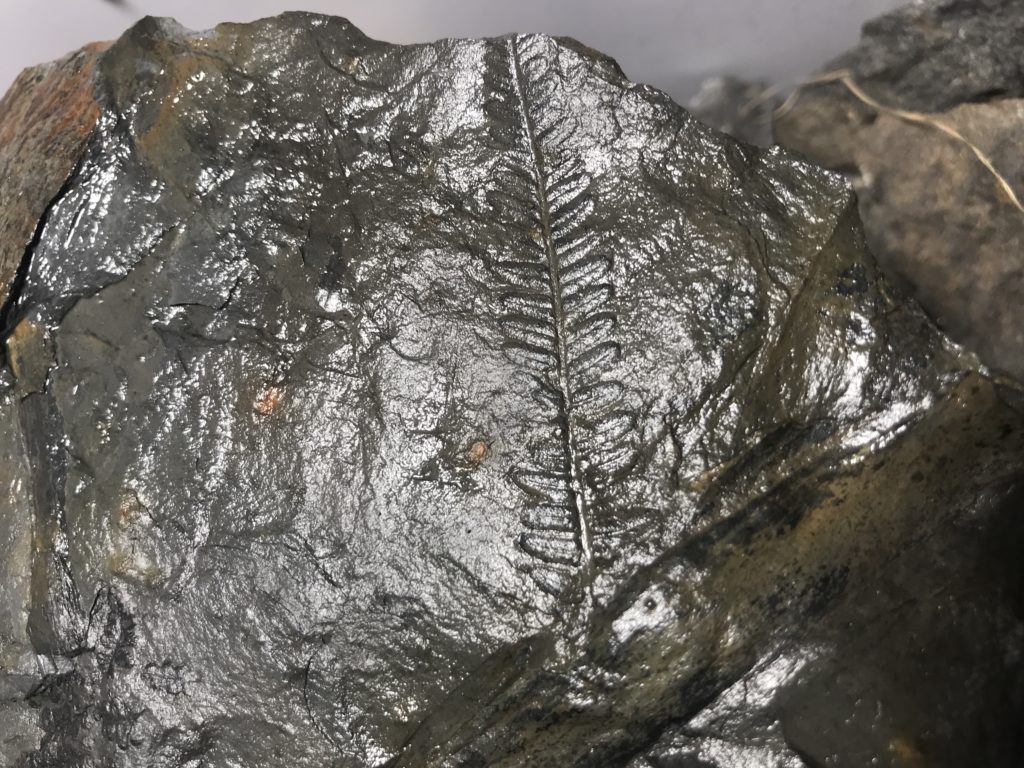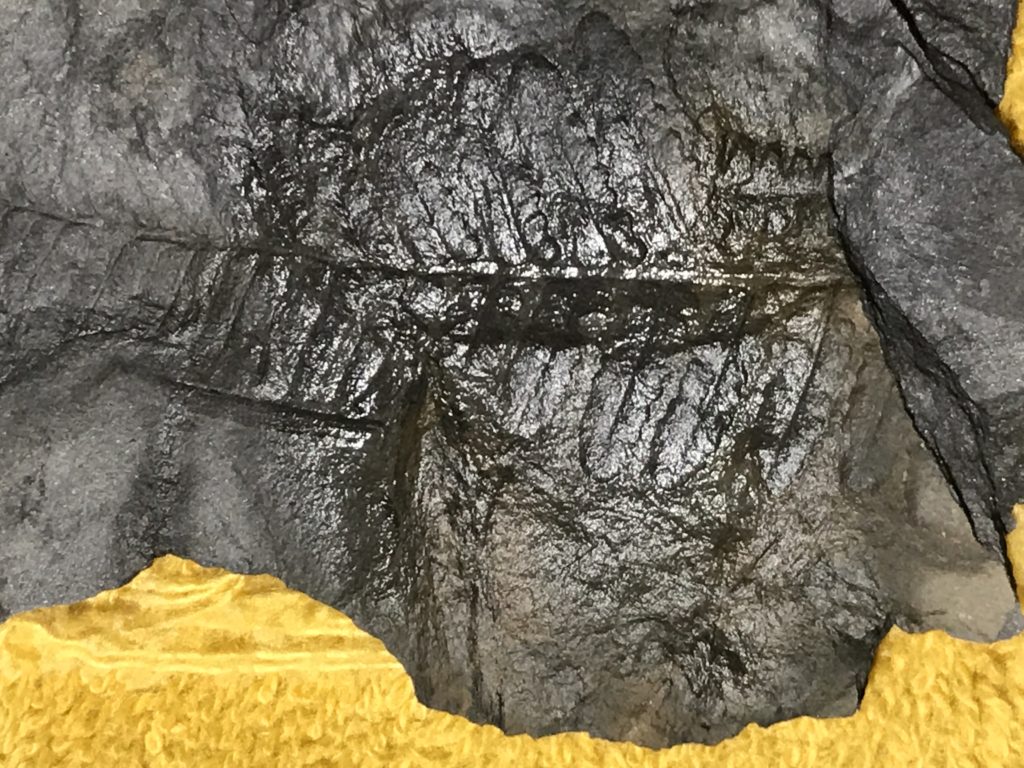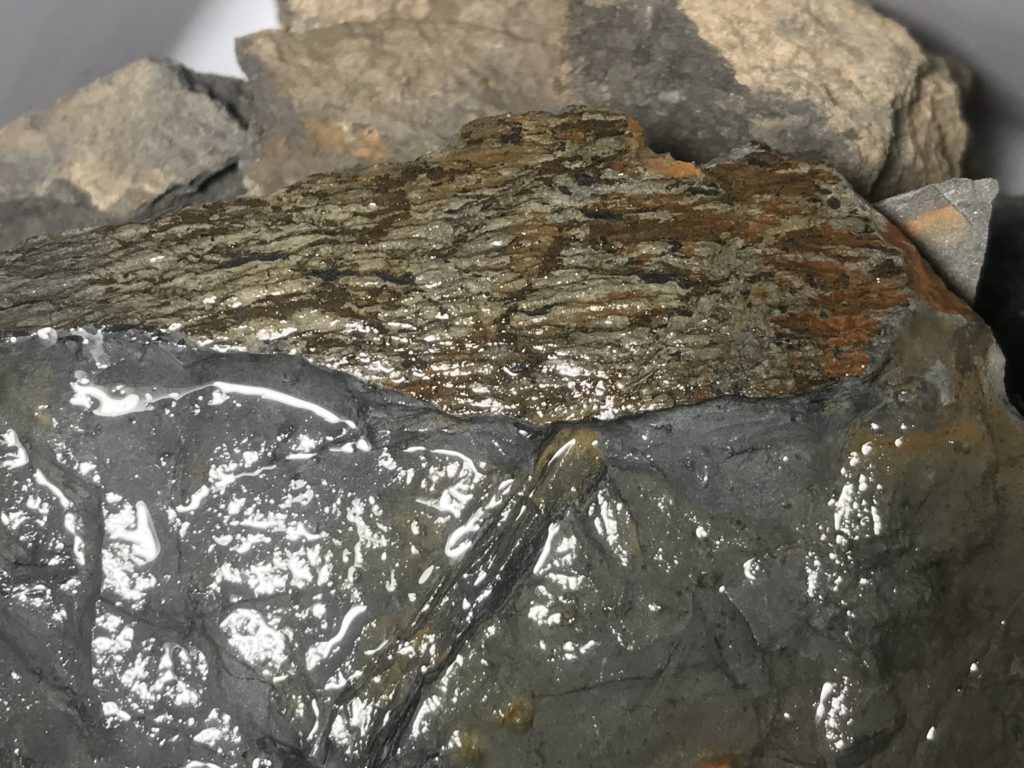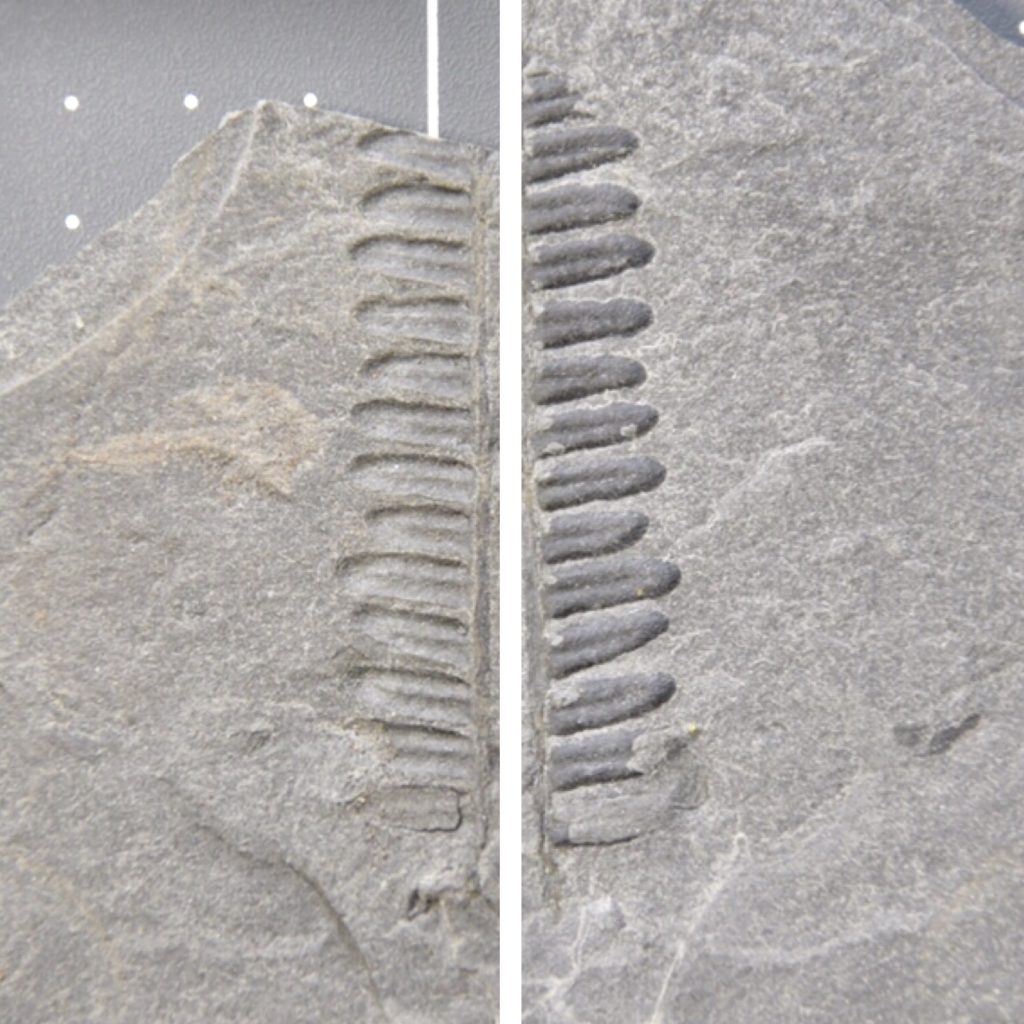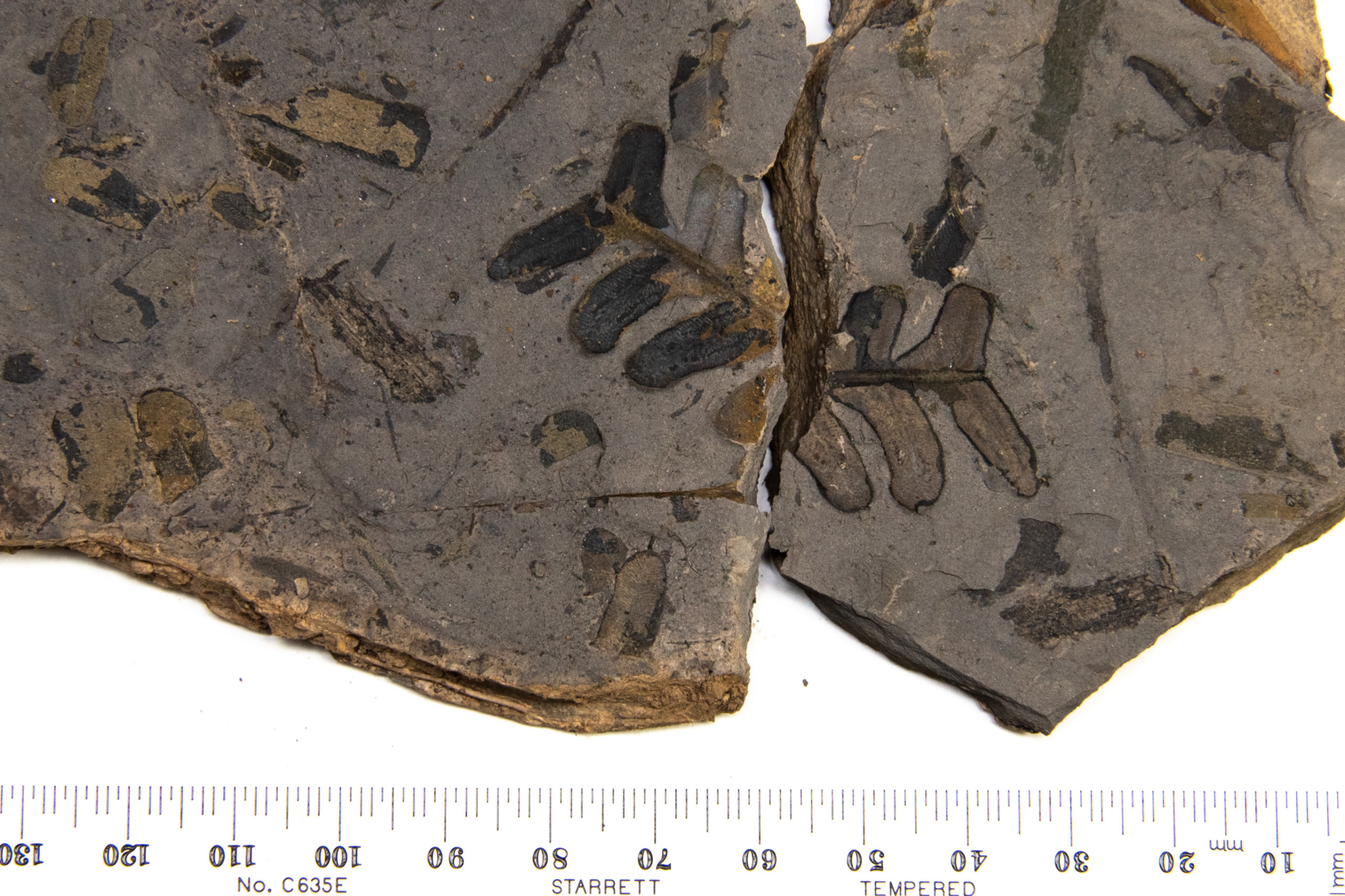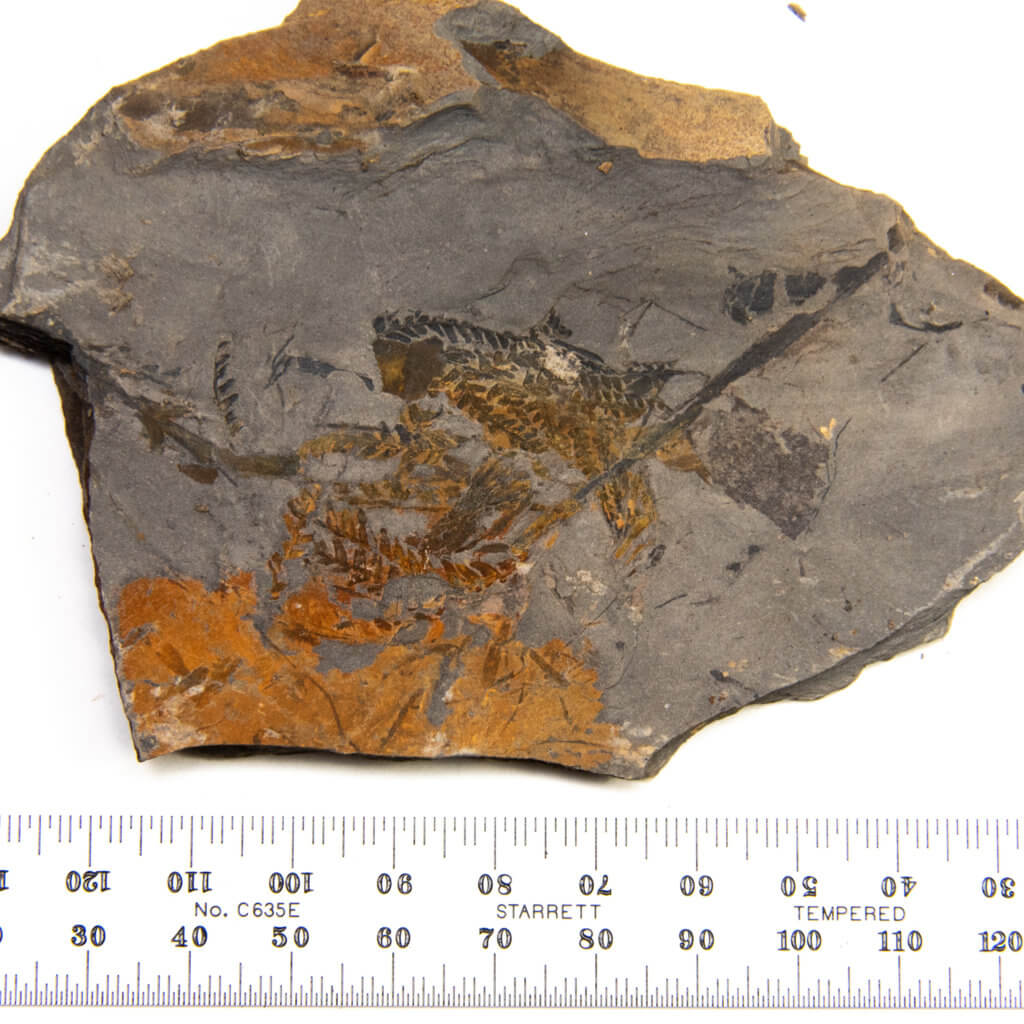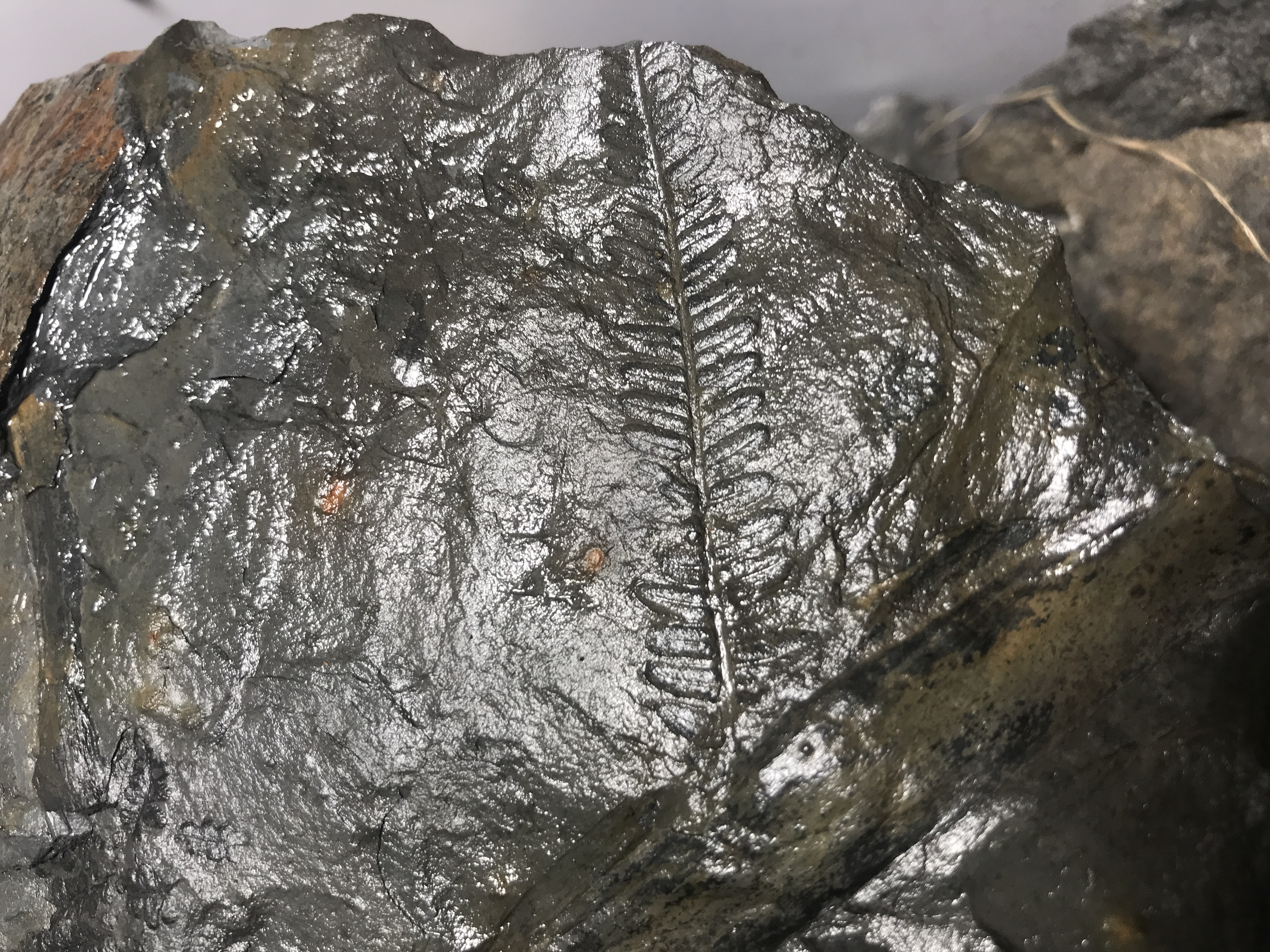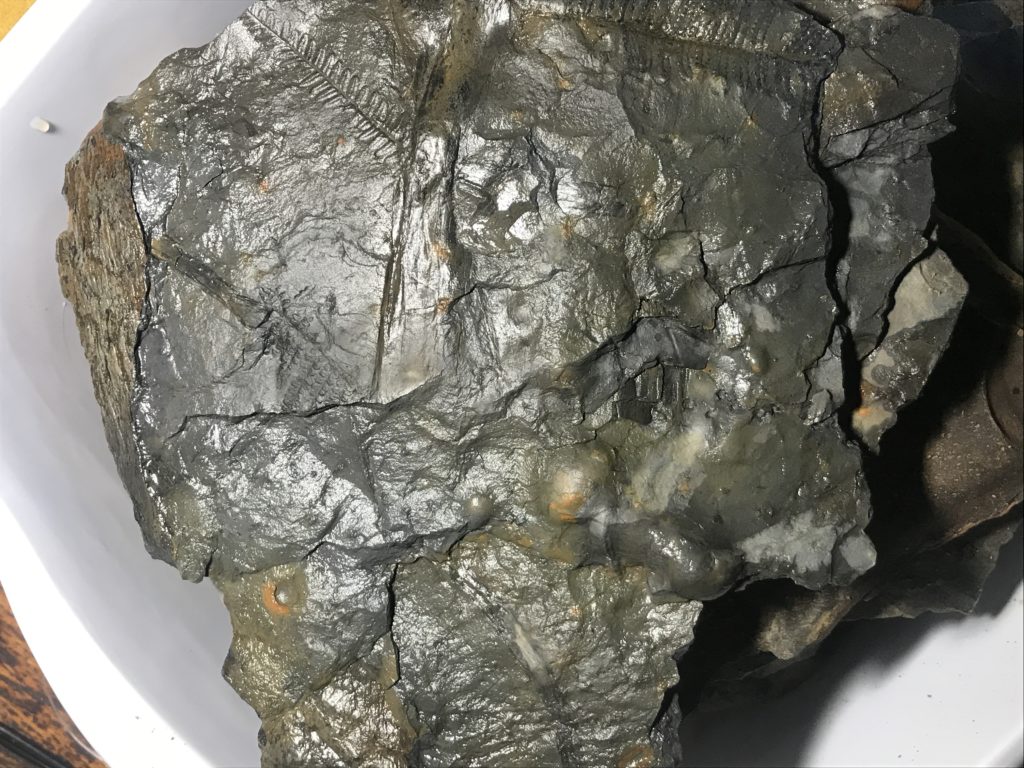Huge slabs of weathered shale and slate run down the local stream nearby. Lifting pieces can introduce you to many different fern fossils. There are bits of Lepidophylloides and pieces of Lepidodendron bark.
The ferns could be Neuropteris or Pecopteris, and I am leaning towards Pecopteris.
Ferns are preserved as an impression in the shale and a thin carbon film. The carbon film is all that remains of the original plant cells as the oxygen, hydrogen, and nitrogen disappear. These can preserve exception details, such as leaf veins and individual cells.
An interesting story I found recently focuses on the origin of coal. It appeared on Earth due to a complete lack of things that ate wood. Without something consuming the wood, all the stored energy in the tree stayed on the ground and turned into the coal we see today.
The Fantastically Strange Origin of Most Coal on Earth by National Geographic.
Below, you will find a gallery of Pennsylvanian fern fossils from Western Pennsylvania.
